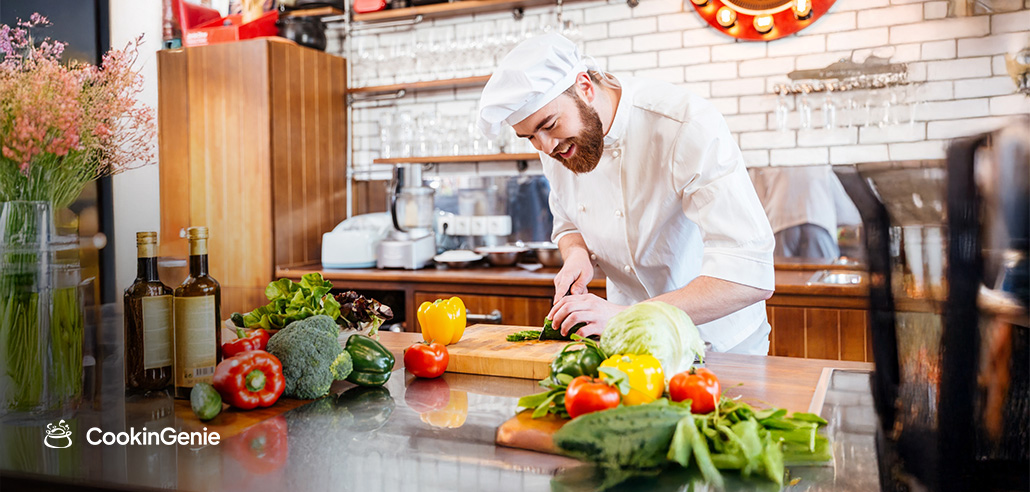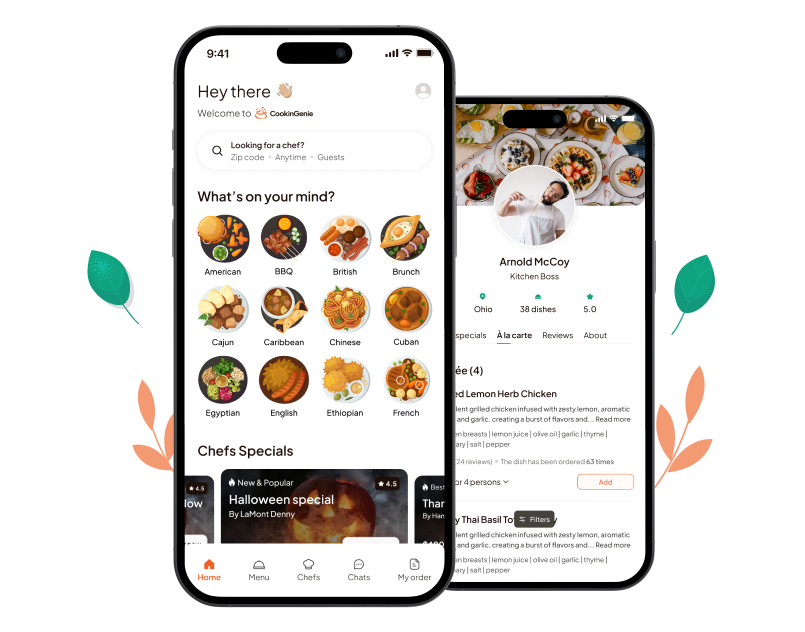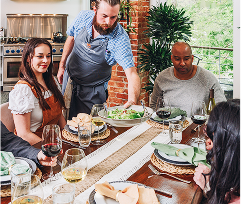Eating with a Conscience: Sustainable Seafood Choices
Seafood is a delicious and nutritious source of protein, but not all seafood is created equal. In fact, many species are being overfished, causing damage to our oceans and threatening the future of our seafood supply.
Sustainable seafood is the solution to this problem. Making conscious choices about the seafood we eat can help protect the environment and support local economies.
In this blog, we’ll explore sustainable seafood and its importance and provide some tips for choosing and cooking it.
About sustainable seafood
Sustainable seafood refers to the practice of catching or farming fish to ensure the species can maintain a healthy population and minimize environmental harm. This approach involves methods that avoid depleting the population or harming the ecosystem. For instance, sustainable seafood options include wild-caught Alaskan salmon, farmed oysters, and Pacific halibut.
Importance of sustainable seafood
Overfishing and unsustainable fishing practices have led to the decline of many seafood species, which can have severe consequences for our oceans’ health and food supply. When we choose sustainable seafood, we can help protect the environment and support local communities. Sustainable seafood can also be more nutritious, as it is often fresher and contains fewer contaminants.
Benefits of Sustainable Seafood
Sustainable seafood is not only good for the environment, but it’s also good for our health and our economy. Here are some benefits of choosing sustainable seafood:
Protects marine ecosystems
The adoption of sustainable seafood practices aids in safeguarding marine ecosystems by preventing the depletion of fish stocks and avoiding the use of unsustainable fishing techniques that can harm habitats. This approach supports a healthy balance in the ecosystem, contributing to a thriving seafood industry.
Supports local economies
Sustainable seafood practices support local economies by ensuring fishermen and seafood farmers can continue to earn a living from the ocean. By choosing sustainable seafood, we can help to support local businesses and economies, which in turn helps to build stronger communities.
Reduces the risk of contamination
Compared to non-sustainable seafood, consuming sustainable seafood typically offers a safer option since it involves methods that minimize the possibility of exposure to harmful substances like mercury, PCBs (POLYCHLORINATED BIPHEYLS), and other toxins.
Provides important nutrients
Seafood is an excellent source of essential nutrients such as omega-3 fatty acids, vitamin D, and protein. Choosing sustainable seafood ensures we get these nutrients without exposing ourselves to harmful substances.
Helps combat climate change
Sustainable seafood practices can help combat climate change by reducing the carbon footprint of the seafood industry. These practices often involve more energy-efficient and environment-friendly fishing and farming methods.
Preserves cultural traditions
Sustainable seafood practices preserve the cultural traditions of fishing and seafood consumption that previous generations have passed down. By choosing sustainable seafood, we can help ensure that these traditions continue to thrive for future generations.
To summarize, choosing sustainable seafood has many benefits, including protecting marine ecosystems, supporting local economies, reducing the risk of contamination, providing essential nutrients, combating climate change, and preserving cultural traditions. Through conscious choices about the seafood we eat, we can help to create a healthier and more sustainable future
Tips for eating sustainable seafood
Look for certifications: Check for labels like Marine Stewardship Council (MSC), Aquaculture Stewardship Council (ASC), and Best Aquaculture Practices (BAP) when buying seafood. These certifications ensure that the seafood is sustainably sourced and farmed.
- Choose local seafood: Eating locally caught seafood supports the local economy and reduces the carbon footprint of transporting seafood long distances.
- Know your seafood seasons: Understanding the seasonal availability of different types of seafood can help you make more sustainable choices.
- Avoid endangered species: Check with the Monterey Bay Aquarium’s Seafood Watch program or the World Wildlife Fund’s sustainable seafood guide to find out which species are threatened or endangered.
- Eat a variety of seafood: Eating a variety of seafood helps reduce pressure on individual species and promotes a healthy, balanced diet.
- Choose seafood caught using sustainable fishing methods: Some fishing methods, such as trawling and dredging, damage the environment and result in high bycatch rates. Opt for seafood caught using sustainable fishing methods like pole, line, or trap fishing.
- Reduce waste: When purchasing a whole fish, use it as much as possible. You can use the bones and head to make fish stock, for example, or the leftovers to make a seafood chowder. This approach reduces waste and ensures full utilization of the fish.
Recipes for sustainable seafood
- Pan-Seared Salmon with Lemon and Dill
Ingredients:
- Four salmon fillets
- 1 tbsp olive oil
- Salt and pepper
- 2 tbsp chopped fresh dill
- One lemon, sliced
Instructions:
- Heat the olive oil in a large pan over medium-high heat.
- Season the salmon fillets with salt and pepper.
- Cook the salmon fillets in a pan for 3-4 minutes on each side until fully cooked.
- Top the salmon with the chopped dill and a few slices of lemon. Serve hot.
- Shrimp Scampi
Ingredients:
- One lb. peeled and deveined shrimp
- Four cloves of garlic, minced
- 1/4 cup butter
- 1/4 cup white wine
- 1/4 cup fresh parsley, chopped
- Salt and pepper
- Lemon wedges
Instructions:
- Melt the butter in a large pan over medium heat.
- Add the garlic and cook for 1-2 minutes or until fragrant.
- Cook the shrimp in the pan for 2-3 minutes on each side until they turn pink and tender.
- Pour in the white wine and scrape the bottom of the pan to release any browned bits.
- Add the chopped parsley and season with salt and pepper to taste.
- Serve hot with lemon wedges on the side.
- Grilled Tuna Steaks
Ingredients:
- Two tuna steaks
- 1/4 cup soy sauce
- 2 tbsp honey
- 1 tbsp olive oil
- One clove of garlic, minced
- Salt and pepper
Instructions:
- Whisk together the soy sauce, honey, olive oil, and garlic in a small bowl.
- Season the tuna steaks with salt and pepper.
- Brush the marinade over the tuna steaks, and coat both sides.
- Preheat a grill to medium-high heat.
- Grill the tuna steaks for 2-3 minutes on each side or until cooked to your liking.
- Serve hot.
- Baked Cod with Tomatoes and Olives
Ingredients:
- Four cod fillets
- 1 pint cherry tomatoes halved
- 1/4 cup sliced Kalamata olives
- Two cloves of garlic, minced
- 2 tbsp olive oil
- Salt and pepper
- Lemon wedges
Instructions:
- Preheat the oven to 375 degrees F.
- Toss the cherry tomatoes, Kalamata olives, garlic, and olive oil in a large baking dish.
- Season the cod fillets with salt and pepper.
- Place the cod fillets on top of the tomato mixture.
- Bake for 15-20 minutes or until fully cooked.
- Serve hot with lemon wedges on the side.
- Grilled Mahi-Mahi Tacos
Ingredients:
- One lb. mahi-mahi fillets, cut into strips
- 1 tbsp. chili powder
- 1 tsp. garlic powder
- 1 tsp. onion powder
- 1/2 tsp. cumin
- 1/2 tsp. salt
- 1/4 tsp. black pepper
- 1 tbsp. olive oil
- Eight corn tortillas
- 1/2 cup shredded red cabbage
- 1/4 cup chopped fresh cilantro
- One avocado, diced
- One lime, cut into wedges
Instructions:
- Preheat the grill to medium-high heat.
- Mix chili powder, garlic powder, onion powder, cumin, salt, and pepper in a small bowl.
- Drizzle olive oil over the mahi-mahi strips and sprinkle the spice mixture, ensuring each piece is well coated.
- Place the strips on the grill and cook for 2-3 minutes on each side until fully cooked.
- Warm the tortillas on the grill for about 30 seconds on each side.
- Assemble the tacos by placing 2-3 strips of mahi-mahi in each tortilla and topping with shredded cabbage, cilantro, and diced avocado. Squeeze a lime wedge over each taco.
- Serve and enjoy.
- Canned Tuna Salad
Ingredients:
- Two cans of sustainable tuna
- 1/4 cup mayonnaise
- 1/4 cup diced celery
- 1/4 cup diced red onion
- 2 tbsp chopped fresh parsley
- 1 tbsp lemon juice
- Salt and pepper
- Bread or crackers for serving
Instructions:
- Drain the cans of tuna and flake the fish into a large bowl.
- Add the mayonnaise, celery, red onion, parsley, and lemon juice to the bowl and stir to combine.
- Season with salt and pepper to taste.
- Serve the tuna salad on bread or crackers.
- Baked Lemon Herb Salmon
Ingredients:
- Two sustainable salmon fillets
- One lemon, sliced
- Two garlic cloves minced
- 1 tbsp chopped fresh rosemary
- 1 tbsp chopped fresh thyme
- Salt and pepper
- Olive oil
Instructions:
- Preheat the oven to 400°F (200°C).
- Line a baking sheet with parchment paper.
- Place the salmon fillets on the prepared baking sheet.
- Drizzle with olive oil and season with salt and pepper.
- Sprinkle the minced garlic, chopped rosemary, and thyme over the salmon fillets.
- Place lemon slices on top of the salmon fillets.
- Bake in the preheated oven for 12-15 minutes or until fully cooked and flakes easily with a fork.
- Serve hot.
These delicious recipes are easy to prepare, making incorporating sustainable seafood into your diet simple. By choosing sustainable seafood options and following these recipes, you can enjoy a healthy, nutritious meal while also helping to protect our oceans and support local fishing communities.
Conclusion
In conclusion, eating seafood is not just a matter of satisfying our taste buds but also significantly impacting our oceans, health, and economy. Choosing sustainable seafood is the way to go, as it helps maintain healthy populations and reduce environmental harm.
By doing so, we can promote marine ecosystems, support local economies, and even contribute to fighting climate change. To make informed decisions, we should opt for sustainably sourced and locally caught seafood, avoid endangered species, understand seasonal availability, choose sustainable fishing methods, look for third-party certifications, and reduce waste using whole fish.
So, let’s be mindful of our seafood choices and positively impact the world.



 Settings
Settings
 Gift Card
Gift Card Blog
Blog Locate Us
Locate Us










 Home
Home
 Chefs
Chefs
 Chats
Chats
 My Order
My Order



